GZMK-expressing CD8+ T cells promote recurrent airway inflammatory diseases
- PMID: 39814882
- PMCID: PMC11821540
- DOI: 10.1038/s41586-024-08395-9
GZMK-expressing CD8+ T cells promote recurrent airway inflammatory diseases
Erratum in
-
Author Correction: GZMK-expressing CD8+ T cells promote recurrent airway inflammatory diseases.Nature. 2025 Feb;638(8052):E45. doi: 10.1038/s41586-025-08712-w. Nature. 2025. PMID: 39905257 Free PMC article. No abstract available.
Abstract
Inflammatory diseases are often chronic and recurrent, and current treatments do not typically remove underlying disease drivers1. T cells participate in a wide range of inflammatory diseases such as psoriasis2, Crohn's disease3, oesophagitis4 and multiple sclerosis5,6, and clonally expanded antigen-specific T cells may contribute to disease chronicity and recurrence, in part by forming persistent pathogenic memory. Chronic rhinosinusitis and asthma are inflammatory airway diseases that often present as comorbidities7. Chronic rhinosinusitis affects more than 10% of the general population8. Among these patients, 20-25% would develop nasal polyps, which often require repeated surgical resections owing to a high incidence of recurrence9. Whereas abundant T cells infiltrate the nasal polyps tissue10,11, T cell subsets that drive the disease pathology and promote recurrence are not fully understood. By comparing T cell repertoires in nasal polyp tissues obtained from consecutive surgeries, here we report that persistent CD8+ T cell clones carrying effector memory-like features colonize the mucosal tissue during disease recurrence, and these cells characteristically express the tryptase Granzyme K (GZMK). We find that GZMK cleaves many complement components, including C2, C3, C4 and C5, that collectively contribute to the activation of the complement cascade. GZMK-expressing CD8+ T cells participate in organized tertiary lymphoid structures, and tissue GZMK levels predict the disease severity and comorbidities better than well-established biomarkers such as eosinophilia and tissue interleukin-5. Using a mouse asthma model, we further show that GZMK-expressing CD8+ T cells exacerbate the disease in a manner dependent on the proteolytic activity of GZMK and complements. Genetic ablation or pharmacological inhibition of GZMK after the disease onset markedly alleviates tissue pathology and restores lung function. Our work identifies a pathogenic CD8+ memory T cell subset that promotes tissue inflammation and recurrent airway diseases by the effector molecule GZMK and suggests GZMK as a potential therapeutic target.
© 2025. The Author(s).
Conflict of interest statement
Competing interests: H.Q. is a cofounder of Emergent Biomed Solutions, Ltd.
Figures

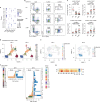



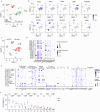


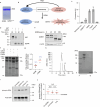

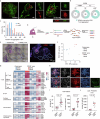
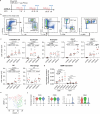

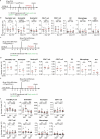

Similar articles
-
Granzyme K activates the entire complement cascade.Nature. 2025 May;641(8061):211-221. doi: 10.1038/s41586-025-08713-9. Epub 2025 Feb 6. Nature. 2025. PMID: 39914456
-
Granzyme K+CD8+ T cells interact with fibroblasts to promote neutrophilic inflammation in nasal polyps.Nat Commun. 2024 Nov 29;15(1):10413. doi: 10.1038/s41467-024-54685-1. Nat Commun. 2024. PMID: 39614076 Free PMC article.
-
Sepsis leads to lasting changes in phenotype and function of memory CD8 T cells.Elife. 2021 Oct 15;10:e70989. doi: 10.7554/eLife.70989. Elife. 2021. PMID: 34652273 Free PMC article.
-
Oral and intranasal aspirin desensitisation for non-steroidal anti-inflammatory drug (NSAID)-exacerbated respiratory disease.Cochrane Database Syst Rev. 2025 Jan 7;1(1):CD013476. doi: 10.1002/14651858.CD013476.pub2. Cochrane Database Syst Rev. 2025. PMID: 39775459
-
Systemic and topical antibiotics for chronic rhinosinusitis.Cochrane Database Syst Rev. 2016 Apr 26;4(4):CD011994. doi: 10.1002/14651858.CD011994.pub2. Cochrane Database Syst Rev. 2016. PMID: 27113482 Free PMC article.
Cited by
-
Ageing, immune fitness and cancer.Nat Rev Cancer. 2025 Aug 14. doi: 10.1038/s41568-025-00858-z. Online ahead of print. Nat Rev Cancer. 2025. PMID: 40813902 Review.
-
'Complement-ing' tissue inflammation via granzyme K?Nat Immunol. 2025 May;26(5):647-649. doi: 10.1038/s41590-025-02120-y. Nat Immunol. 2025. PMID: 40186070 No abstract available.
-
Therapeutic strategies targeting complement in myasthenia gravis patients.J Neurol. 2025 Jul 2;272(8):489. doi: 10.1007/s00415-025-13225-7. J Neurol. 2025. PMID: 40601074 Free PMC article. Review.
-
Beneficial role of GZMK+CD8+ T cells in neurodegeneration.Nat Immunol. 2025 Jul;26(7):1002-1003. doi: 10.1038/s41590-025-02209-4. Nat Immunol. 2025. PMID: 40562961 No abstract available.
-
Granzyme K+ CD8 T cells slow tauopathy progression by targeting microglia.Nat Immunol. 2025 Jul;26(7):1152-1167. doi: 10.1038/s41590-025-02198-4. Epub 2025 Jun 24. Nat Immunol. 2025. PMID: 40555833
References
-
- Camus, M. et al. Oligoclonal expansions of mucosal T cells in Crohn’s disease predominate in NKG2D-expressing CD4 T cells. Mucosal Immunol.7, 325–334 (2014). - PubMed
MeSH terms
Substances
LinkOut - more resources
Full Text Sources
Molecular Biology Databases
Research Materials
Miscellaneous

